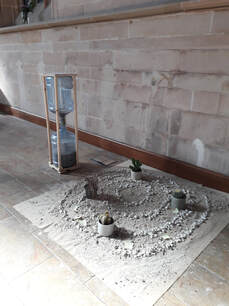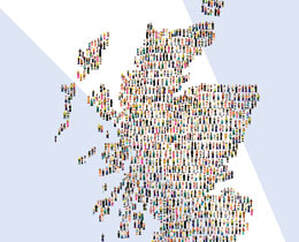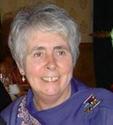
People joined in from all kinds of backgrounds and many of them will have been religious, inspired by their religious beliefs. All religions have a sense of the sacredness of the natural world and want to treat it with reverence and respect. But it was the common concern for global warming that united them across national, cultural, ethnic and religious divides. Who’s going to worry about differences in doctrine or religious truths, about who’s right and who’s wrong in the face of a common problem that endangers our very survival. These differences fade into insignificance in the face of a common threat to our world. It’s responding together to problems like this that helps unite us and encourages us to do what Jonathan Sacks called building a common home.
In the light of this the recent phenomenon of thousands of people flocking to some Churches and Cathedrals to honour and venerate the relics of St Therese of Lisieux seems a bit bizarre. No doubt some of the people who did this were also part of the climate change demonstrations and perhaps even prayed for the future healing of our planet but the two events set side by side seem to be in direct opposition to one another – one involved with the world and the other with an other-worldly spirituality. Saints and relics are peculiarly Catholic and some members of the Reformed and Non- conformist tradition find it extremely odd and even idolatrous.
Therese of Lisieux was a young woman who died at the early age of 24, she became a Carmelite nun at 15 and spent her life in the convent praying for the world. She saw herself as a missionary with a great love and concern for missionaries, for prisoners, for what she called sinners. Her life was hidden and she talked about a little way – of doing everything with love, with the intention of healing the world and in doing this there’s no doubt that she put in to the universe a strong, positive energy. Catholics have loved her, because she said she wanted to spend her heaven doing good on earth and so they find her a powerful support but also because her ‘little way’ is open to everyone and doesn’t require status or heroics. It simply means doing what is ours to do well, with love and a concern for the world which includes creation as well as our brothers and sisters who share our common humanity. So maybe the two events are not so different after all.
People will have gone to honour the relics that included vigils, reflection, praying out of their own need, that of their loved ones and the world itself. I don’t want in any way to belittle that. I’ve often thought that Catholicism is, like Hinduism, a religion of devotion and perhaps in the past years the approach to religion has tended to be a bit academic and people have been deprived of a personal practice to help support them in their daily life.
Practice is important – as is action for social justice which makes a recent letter from Spain’s Catholic Bishops even more bizarre. The Bishops were warning against the use of mindfulness and suggesting that Catholics were in danger of effectively abandoning the Catholic faith if they engaged in it. I think Therese of Lisieux would have understood mindfulness and appreciated its benefits. It’s a Buddhist practice though now used in the secular world as a help with stress and mental health difficulties. Its focus is living in the present moment, appreciating the present and trying to stop the mind from running away with itself into imaginings that are in fact unreal, distressing and even harmful. When I first learned about mindfulness it struck me as very similar to what Catholics called the Sacrament of the Present Moment. There’s a 300 year old spiritual classic of that name written by Jean- Pierre de Caussade which offers guidance for living each day in communion with God, accepting each moment at is comes breath by breath as a gift from God and living it is as lovingly and wholeheartedly as possible. It means facing up to the realities of the present. It was and is seen as a path to God. It was practised by saints such as Brother Lawrence 400 years ago and by Therese of Lisieux 140 years ago and is still practised by many Christians today – even if they call it mindfulness. It seems the Spanish bishops are out of touch with their own spiritual tradition!



 RSS Feed
RSS Feed
